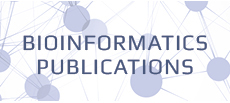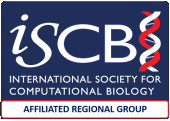The Ostuni lab combines advanced single-cell and spatial genomics on human samples with mechanistic studies in the mouse to elucidate how microenvironmental factors shape the behavior
of innate immune cells. Over the years, we contributed to the understanding of the molecular control and functional implications of macrophage and neutrophil diversity in homeostasis and cancer. Our research has been published in top scientific journals and is funded by the most prestigious agencies such as the European Research Council (ERC-StG, ERC-CoG, ERC-PoC). Our vision is that by taking an interdisciplinary approach to understand biology we will develop the next generation of cell and gene therapies for immune-mediated human diseases, such as cancer. In our group, wet-lab and computational scientists engage in a virtuous cycle whereby biology instructs data analysis and data analysis fuels experimental hypothesis.
We recently discovered a central pathogenetic mechanism driving inflammation and immune evasion in pancreatic cancer (PDAC), fueled by the local interplay between a subset of IL-1b+ macrophages and tumor cells endowed with molecular features of aggressive disease (Nature 2023). We further developed state-of-the-art technologies for spatial gene expression analyses in human PDAC samples that enable in situ quantification of hundreds of transcripts with subcellular resolution. The successful applicant will build on these unique datasets and resources to elucidate the spatial dynamics and niche control of immune-stromal-tumor cell interactions in human cancer. Development of methods, pipelines, and tools for data analysis, as well as active engagement in multiple lab projects, is a key anticipated output of the research activity.
We offer a fixed-term job contract with competitive salary, benefits, and training programs commensurate to experience and qualifications. International candidates will benefit from major tax deduction. The applicant will conduct her/his research in the context of the SR-Tiget Bioinformatics Core and the Center for Omics Sciences (COSR) at the San Raffaele Scientific Institute, one of the Country’s largest communities of bioinformaticians. The San Raffaele is a leading Research and Clinical center with a clear mission to develop advanced medicines. Working language in the Institute is English. Milan is an international city with a high quality of life, exceptional art, cultural and culinary scenes, as well as easy access to some of the best landscapes and outdoor activities in the North of Italy.
We look for PhD graduates in Computational Biology, Computer Science, Mathematics, Physics, or Statistics. Applications are welcome from qualified biomedical scientists with previous expertise in data analysis. Proficiency in R and Python programming as well as in transcriptome and/or epigenome and/or spatial gene expression data analysis are key requirements for the position. The ideal candidate has documented research experience, a genuine passion for science and seeks to apply her/his expertise and talent to solve key biological questions. She/he enjoys working with independency, accuracy, and precision within a collaborative and friendly environment.
Applications must include an updated CV with contact information for 2/3 references and a statement letter outlining specific motivations to join the lab and current/future research interests. All documents should be sent by email to Prof. Renato Ostuni (ostuni.renato@hsr.it) within March 31st, 2024. Interviews of short-listed candidates will begin immediately and proceed until the position is filled.
References. Caronni, Laterza, Vittoria, Barbiera et al Nature 2023; Montaldo, Lusito, Bianchessi, Caronni et al Nat Immunol 2022; Cilenti, Barbiera et al Immunity 2021; Natoli and Ostuni, NatImmunol 2019; Ng, Ostuni and Hidalgo, Nat Rev Immunol 2019. Piccolo, Curina et al Nat Immunol 2017; Ostuni, Piccolo, Barozzi, Polletti et al Cell 2013




